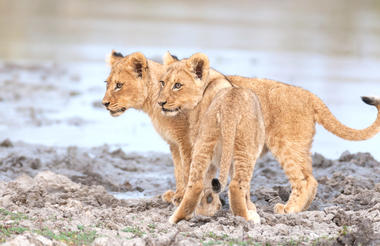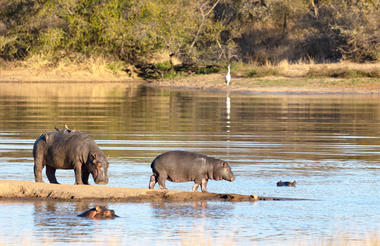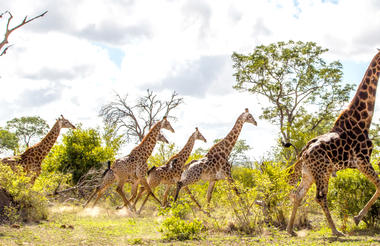The Western Cape, arguably the most scenic and varied of South Africa's nine provinces, serves as a major drawcard for visitors to South Africa. Located in the southwest corner of the country, the province is blessed with stunning coastlines, breathtaking mountains, indigenous forests, historic wine estates and scorched stretches of strikingly beautiful semi-desert. Visitors can enjoy everything from the magnificent city of Cape Town with its iconic Table Mountain and gorgeous surrounding Winelands, to the exhilarating outdoor activities and spectacular natural scenery of the Garden Route, as well as the fynbos-covered sand dunes, sun-bleached beaches and remote fishing villages of the lesser-explored West Coast region. The Western Cape has just about everything that the rest of the country can offer, all rolled into one easy explorable destination.

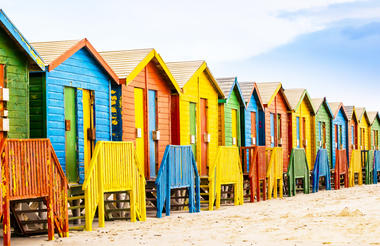
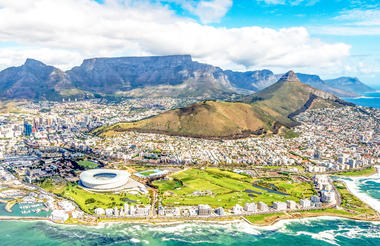
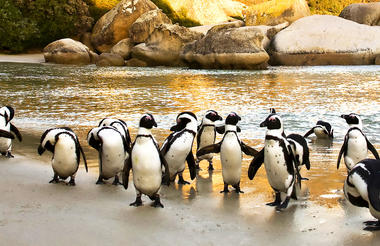


The West Coast of South Africa is almost startlingly different to the rest of the country and for that reason is well worth exploring. With a number of National Parks, and game reserves, the West Coast is able to match any wildlife enthusiast’s need for spending time among the fabulous wild creatures for which South Africa is famous.
The West Coast National Park lies Inland from Saldanha Bay and the crashing waves of the Atlantic Ocean. It has 3 distinct sections, each with its own unique delights. With the azure blue Langebaan Lagoon, the white dunes, unspoilt golden beaches, sheltered islands, rare fynbos, green wetlands, and salt marshes, this National Park has its own unique flavour. In fact, no other South African National Park has one quite like it.
Delve back into the past at the Khwa Ttu San Heritage Centre, the West Coast Fossil Park and with the guided Lighthouse Tour at Cape Columbine Nature Reserve.
Explore the tastes of the West Coast at the Geelbek Restaurant, a beautifully restored Cape Dutch building which is now a national monument but was once as an outpost for people on their hard and difficult journey inland. In fact, Foodies are spoilt for choice on the West Coast. Take Paternoster, for example. Famous South African chefs have their home here, and it’s not surprising when you consider that this small town has excellent restaurants, some right on the beach, serving sublimely fresh and tasty seafood. Lobster, herring, mussels, snoek, oysters, and pilchards either caught in the cold Atlantic or farmed in the nearby Langebaan Lagoon. The lobster is so delicious that it is exported to France. A well-known delicacy is bokkoms – whole, salted, and dried mullet. Sometimes the fish is smoked, and Paternoster is the best place to try this ‘fish biltong’.
Then there’s the craft beer on tap from the carbon neutral, family friendly, Darling Brew, famous for their ‘slow beer’ which is not only the name of the slow fermentation process but also their first beer, and their philosophy.
Die Swartland area of the West Coast is a beautiful farming area. It has soft, undulating hills of a countryside dominated by wide, sprawling, fields of wheat, encased by mountain ranges. With the ripe yellow wheat fields are intercut by thriving vineyards, fruit-heavy orchards, olive plantations, and rooibos and vegetable farms interspersed with wilderness and quaint farm villages, it is a wonderful counterpoint to the rugged, windswept, almost barren beauty of the coast.






Over the centuries, French, Dutch, English, Malay and African influences have moulded a city replete with natural beauty, an eclectic culinary smorgasbord, and a rich history. This is Cape Town, the Mother City, the oldest city in South Africa. And it’s where modern South Africa began. The seat of the South African parliament is here making Cape town the legislative capital of South Africa.
Cape Town has been called Table Bay, the Cape of Storms, the Cape of Good Hope, The Cape, and directors of the English East India Company described it as ‘the Gibraltar of India’. It finally became known as Cape Town in 1773. The Dutch East India Company had sent Jan van Riebeeck to build a fort, as well as The Company Garden - a vegetable garden and fruit orchard to supply ships on their way to the East and Australia with fresh food. A remnant of the garden still exists in the city today, including one of the original Saffron pear trees which is still bearing fruit. It’s the oldest cultivated fruit tree in the country.
The most prominent and iconic feature of Cape Town is Table Mountain. One of the New Seven Wonders of the world, and part of the Cape Floral Kingdom World Heritage Site, Table Mountain is one of the most popular visitor destinations in Cape Town. From the top, you can see the whole of the city laid out before you, as well the Pacific Ocean lapping at the foot of the African continent, and further along the coast is the Atlantic Ocean.
The mix of ethnic influences have, over the years, created a city with a unique, creative and cosmopolitan flavour unlike any other city in South Africa. All of which can be experienced in the museums, art galleries, spectacular seafood, the Victoria and Albert Waterfront, the Two Oceans Aquarium, the historic and important Robben Island. Wildlife such as great white sharks, penguins, seals, and iconic African wildlife in the nearby national parks. Cape Town also has one of the most colourful and photographed suburbs in all of South Africa – the Bo-Kaap. The narrow cobble streets and brightly painted homes on the slopes of Signal Hill form what was historically called the Malay Quarter. It was where free slaves and Muslims settled in Cape Town and the only place where they were allowed to freely practice their religion.
Combined with architecture that is both historically important and beautiful, vibrant nightlife, world-class beaches and the weather to go with them, as well as the city’s proximity to internationally renowned vineyards, and cheese farms makes Cape Town the city with it all, and more.




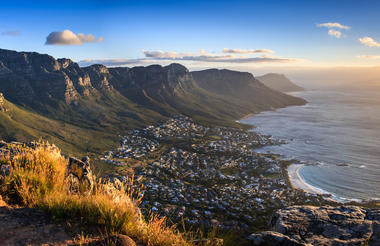
Set high on the escarpment, the Mpumalanga Highlands feature endless savannah plains meeting steep mountain passes hugging rugged rocky cliffs. The Highlands of Mpumalanga are a playground for nature and adventure lovers. A number of charming, high-altitude, grassland villages are scattered on a sea of cattle ranches which are interspersed with numerous trout fishing locations and mountain hideaways. Aside from the trout and quaint towns the highland scenery and flora and fauna are also major attractions. Visitors can enjoy a number of wonderful activities including: discovering crystal-clear streams and cascading waterfalls, visiting the Highland’s tourism mecca of Dullstroom, as well as horse riding, whiskey and beer tasting, hiking, fly fishing and much more.






The Kruger National Park has attained international renown, but the terms ‘Kruger National Park’ (KNP) and ‘Greater Kruger’ are often used interchangeably, despite their differences. The distinction between the two is important, to understand both the tourist experience and how this conservation model has impacted the wildlife of the area.
The ‘Greater Kruger’ refers to 344,000 hectares (860,000 acres) of protected land to the west of Kruger National Park that provides a more substantial area for wildlife to roam freely. Private and local community property owners own this additional land, and most is utilised for commercial purposes.
There are no longer fences between these properties and KNP, providing the animals with an opportunity to roam, thereby reducing pressure on vegetation and bringing back historical local seasonal wildlife movements. Historically most seasonal migration was in an east-west direction, from the coastal areas of Mozambique to the slopes of the Drakensberg mountains, to take advantage of seasonal food and water. Fences and human pressure now prohibit that movement, and the north-south shape of KNP is not optimal for seasonal migrations.
The Greater Kruger is utilised primarily for photographic tourism and is home to some of South Africa’s best-known luxury Big 5 lodges. Relatively high prices and strict access control results in low visitor numbers compared to the neighbouring KNP, and off-road driving (by experienced guides), night drives and bush walks guarantee fantastic wildlife encounters.
Wildlife industry
South Africa’s conservation strategy incorporates other wildlife industries such as hunting; a strategy that has resulted in large areas outside of national parks falling under some form of protection against livestock and crop farming and other forms of development not tolerant of wildlife. A small portion of the hundreds of landowners making up the Greater Kruger permit trophy hunting on their (non-tourism) properties, to fund their significant and increasing anti-poaching and other conservation costs. The limited trophy hunting quotas are subject to approval by the KNP, and hunting protocol strictly enforced by the management of the constituent reserves. That said, immoral or illegal behaviour by members of the trophy hunting industry does occur. Trophy hunting in most constituent reserves within Greater Kruger is gradually being squeezed out by the resurgent photographic tourism industry, and no trophy hunting is permitted in the KNP itself.
Despite ongoing challenges, the Greater Kruger is one of conservation’s greatest success stories and is the model underpinning KNP’s 10-year management plan. It is also the perfect safari destination for those looking for exclusive encounters with Africa’s Big 5.



